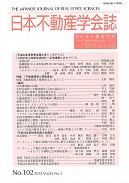Volume 26, Issue 3
Displaying 1-24 of 24 articles from this issue
- |<
- <
- 1
- >
- >|
-
2013Volume 26Issue 3 Pages 3-11
Published: March 25, 2013
Released on J-STAGE: November 24, 2016
Download PDF (1402K) -
2013Volume 26Issue 3 Pages 12-13
Published: March 25, 2013
Released on J-STAGE: November 24, 2016
Download PDF (401K) -
2013Volume 26Issue 3 Pages 14-27
Published: March 25, 2013
Released on J-STAGE: November 24, 2016
Download PDF (1584K) -
2013Volume 26Issue 3 Pages 28
Published: March 25, 2013
Released on J-STAGE: November 24, 2016
Download PDF (135K) -
2013Volume 26Issue 3 Pages 29-34
Published: March 25, 2013
Released on J-STAGE: November 24, 2016
Download PDF (285K) -
2013Volume 26Issue 3 Pages 35-39
Published: March 25, 2013
Released on J-STAGE: November 24, 2016
Download PDF (353K) -
2013Volume 26Issue 3 Pages 40-46
Published: March 25, 2013
Released on J-STAGE: November 24, 2016
Download PDF (1828K) -
2013Volume 26Issue 3 Pages 47-51
Published: March 25, 2013
Released on J-STAGE: November 24, 2016
Download PDF (328K) -
2013Volume 26Issue 3 Pages 52-57
Published: March 30, 2017
Released on J-STAGE: November 24, 2016
Download PDF (303K) -
2013Volume 26Issue 3 Pages 58-64
Published: March 25, 2013
Released on J-STAGE: November 24, 2016
Download PDF (311K) -
2013Volume 26Issue 3 Pages 65-70
Published: March 25, 2013
Released on J-STAGE: November 24, 2016
Download PDF (1032K) -
2013Volume 26Issue 3 Pages 71-77
Published: March 25, 2013
Released on J-STAGE: November 24, 2016
Download PDF (340K) -
2013Volume 26Issue 3 Pages 78-84
Published: March 25, 2013
Released on J-STAGE: November 24, 2016
Download PDF (1426K) -
2013Volume 26Issue 3 Pages 85-92
Published: March 25, 2013
Released on J-STAGE: November 24, 2016
Download PDF (4118K) -
2013Volume 26Issue 3 Pages 93-100
Published: March 25, 2013
Released on J-STAGE: November 24, 2016
Download PDF (1516K) -
2013Volume 26Issue 3 Pages 101-105
Published: March 25, 2013
Released on J-STAGE: November 24, 2016
Download PDF (360K) -
2013Volume 26Issue 3 Pages 106-107
Published: March 25, 2013
Released on J-STAGE: November 24, 2016
Download PDF (807K) -
2013Volume 26Issue 3 Pages 108-109
Published: March 25, 2013
Released on J-STAGE: November 24, 2016
Download PDF (171K) -
2013Volume 26Issue 3 Pages 110
Published: March 25, 2013
Released on J-STAGE: November 24, 2016
Download PDF (250K) -
2013Volume 26Issue 3 Pages 118-123
Published: March 25, 2013
Released on J-STAGE: November 24, 2016
Download PDF (273K) -
2013Volume 26Issue 3 Pages 124-129
Published: March 25, 2013
Released on J-STAGE: November 24, 2016
Download PDF (309K) -
2013Volume 26Issue 3 Pages 130
Published: March 25, 2013
Released on J-STAGE: November 24, 2016
Download PDF (151K) -
2013Volume 26Issue 3 Pages 131-133
Published: March 25, 2013
Released on J-STAGE: November 24, 2016
Download PDF (992K) -
2013Volume 26Issue 3 Pages 134-
Published: March 25, 2013
Released on J-STAGE: November 24, 2016
Download PDF (258K)
- |<
- <
- 1
- >
- >|
